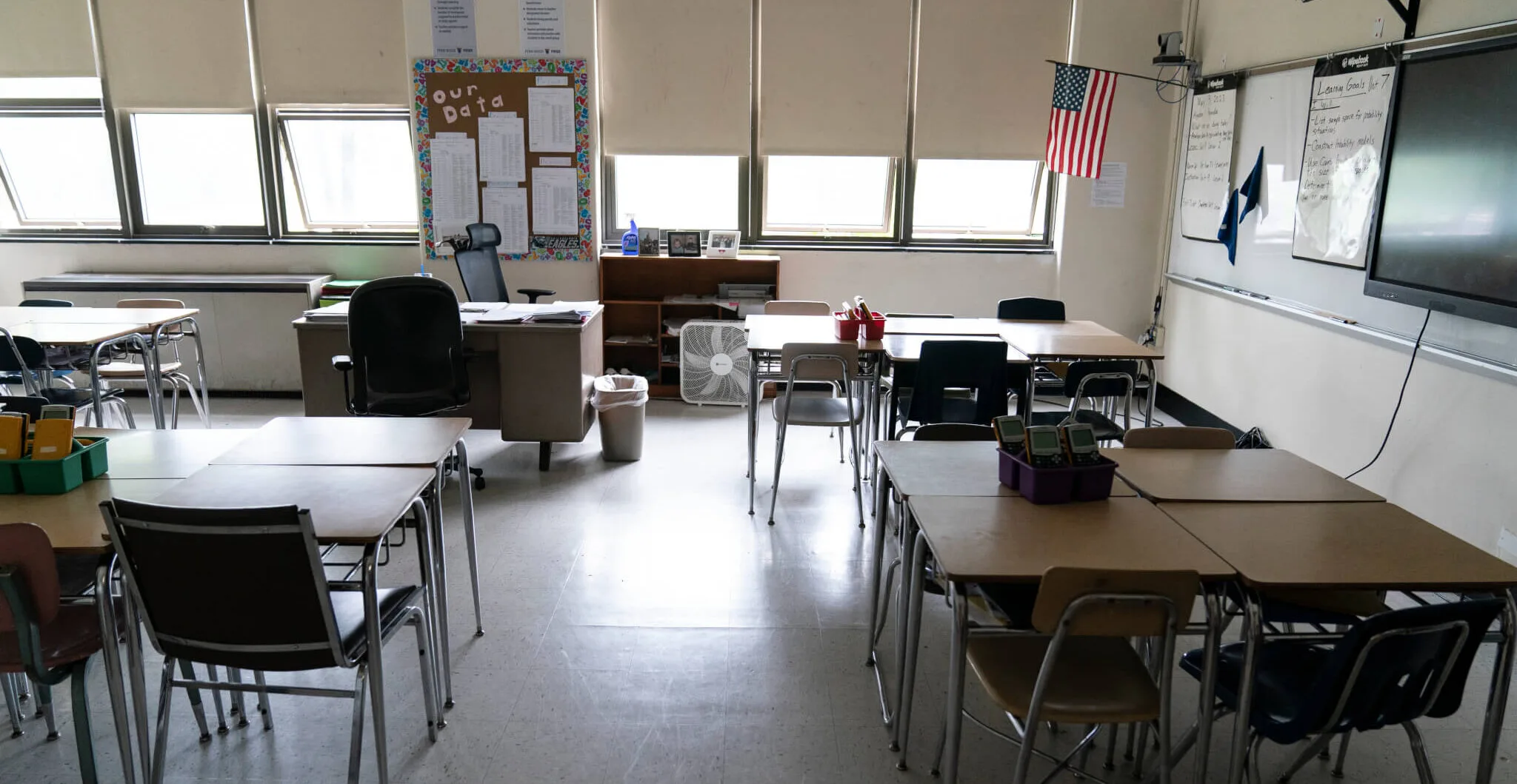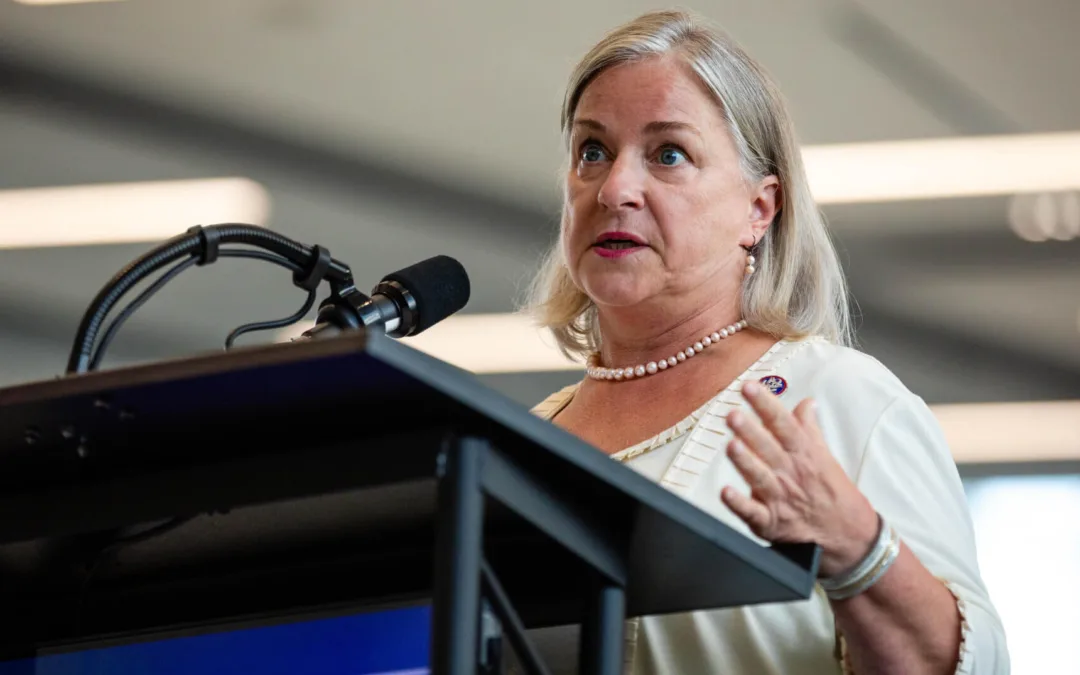
Shown is a class room at Penn Wood High School in Lansdowne, Pa., Wednesday, May 3, 2023. As schools across the country struggle to find teachers to hire, more governors are pushing for pay increases and bonuses for the beleaguered profession. (AP Photo/Matt Rourke)
Did you know that by the year 2025, one in four students across the country will come from a home speaking multiple languages, and that most English Learners (ELs) are now born in the United States?
As an EL educator with 23 years of experience, I know how critically important it is to support these students so that they will thrive and succeed. That’s why I have dedicated a large portion of my career to connecting our EL students and families district wide and helping other K-12 educators learn strategies and resources that will empower them to reach, teach, and confidently communicate with English language learners and their families.
EL students often experience isolation, unaware that there are other people in the school building who also speak multiple languages. For example, at the Interboro School District, where I teach, I had two students from Cambodia, a fourth grader and a sixth grader, who were just one hallway away but didn’t know each other. Both kids had a shared love for art, and when I introduced them, they connected at once.
There are more than 300 EL students in my district speaking at least 25 different languages. I want to ensure that they can connect with each other within their school buildings and across the district.
I also want to give our kids the chance to see that the world is much bigger than the school walls that surround them. And the best way to do that is to provide them with a supported environment to authentically demonstrate their skills.
To address this need for our EL students and their families, I have written state and local grants with our Interboro teams to create local community experiences for our K-12 students.
Students now take mini field trips four times per year with their teachers and multilingual peers to local establishments, such as city trips and trips to orchards, restaurants, recreational sports clubs, and pottery studios. Afterward, they are asked to write about their experiences.
It is during these field trips that students meet classmates from other grades and buildings who also speak the same heritage languages. It is awesome to watch our elementary students’ eyes light up as they connect with their multilingual peers.
The kids also pick up incredibly valuable life skills. For some EL students, it can be intimidating to do something as simple as ordering a meal at a restaurant. These field trips give them a wonderful opportunity to navigate a menu, order their entrees, and pay their checks.
In addition to teaching EL students, I also have the privilege of traveling across the nation to provide professional development opportunities for K-12 educators. There are teachers out there who want to confidently reach, teach, and connect with our EL students and families, but they just aren’t sure how.
I spend a lot of time addressing misconceptions about our English learners’ life experiences, modeling how to accommodate assignments to support language acquisition, and emphasizing the collaboration needed between content area and EL teachers.
Sometimes, it is tempting to assume that the experiences of English learners are the same. If you’re from this country, it means this. If you’re from that country, it means that. The truth is every student’s journey is unique.
That fact comes across very clearly in a book I released in the summer of 2021 called “Take Me Home,” which chronicles the EL experience through the eyes of 11 of my former students.
These students are now in their late 20s and early 30s. While writing the book, I sought them out and said, “Now that you’re a young, bilingual, professional person working out in the world, and you can reflect on that experience of going through school, what was it really like for you?” The book is an eye-opening account of their stories and a celebration of the entire experience of being an EL student.
Educators don’t just fall into teaching. We are called into it. And for those of us lucky enough to work with EL students, we navigate not only students’ academic needs but their social and cultural needs, as well. We advocate for them when we work with other teachers so they can best support these students in class.
I look forward to continuing my journey to teach, reach, and support EL students, families, and teachers in every way I can.
Andrea Bitner is an English Learner (EL) teacher in the Interboro School District in Delaware County. She is also the author of “Take Me Home,” a book released in 2021 that tells the true inspiring story of 11 of her former bilingual students who give firsthand accounts of what it was like to become bilingual in America. You can learn more about Andrea and her mission at www.andreabitnerbooks.com.

For Rep. Susan Wild, supporting PA families includes reproductive rights and much more
Rep. Susan Wild wants to be very clear with Pennsylvanians: Donald Trump is committed to taking away women’s reproductive freedom, but he is not...

School districts working with anti-LGBTQ groups can cost your kids’ schools millions
Parents across South Central Pennsylvania are worried about the potential financial impacts working with anti-LGBTQ groups may have on their school...

VIDEO: Trump distances himself from his anti-abortion views
Donald Trump appeared on WGAL on Tuesday and continued to distance himself from his anti-abortion views claiming that reproductive rights are now a...

VIDEO: Community pushback gets school board to rescind decision on denying gay actor’s visit
Cumberland Valley School Board offered a public apology and voted to reinstate Maulik Pancholy as a guest speaker a week after the board voted to...

VIDEO: Project 2025 brings nuclear armageddon back into vogue
Project 2025 is a titanic document, with plans ranging from cutting half of all government employees to targeting reproductive rights on a scale...




